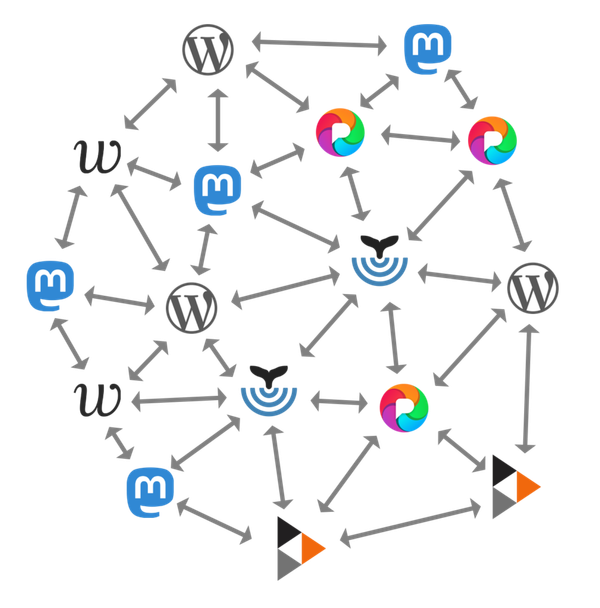My Thoughts on ChatGPT

Editors Note: Joshua will be writing a column for us on Tuesdays! This will, at some point, be for paying members. But for now enjoy Joshua’s wisdom!

Everybody’s talking about ChatGPT.
Especially at the beginning, everyone was going crazy.
But (from what I’ve seen), it seems more people are starting to shift their perspective a bit. Is ChatGPT truly a revolutionary content marketing tool, or is it simply a short-lived social media trend?
As a writer, I was a bit skeptical — but not out of fear that ChatGPT would replace me.
My main concern was that people were getting caught up in the hype (and neglecting the long-term disadvantages of relying on ChatGPT-generated content).
I was afraid businesses were putting TOO much faith in it.
Now don’t get me wrong — the capabilities of this tool are undeniably impressive. Regardless of whether you believe in ChatGPT from a content marketing perspective, it can do some pretty cool stuff.
But in the context of business-related content writing, there are a few things you should be aware of.
The Drawbacks of ChatGPT
Anyone can type a prompt and within seconds, get a full-fledged blog post. Or type in a prompt and get back a properly-formatted Twitter thread.
Sounds pretty great, right?
But here’s the reality:
The MORE people use ChatGPT, the LESS valuable the information will become. It’s inversely proportional.
ChatGPT simply surfs the web, gathers its data, and spits out the output. It’s bound by the constraints of what’s already on the internet.
And if lots of people share the same information…
where’s the value in that?
In other words, ChatGPT has commoditized content-writing.
That’s why in the age of these AI-driven systems, sharing your stories and personality is important. That’s where you have the advantage compared to ChatGPT.
Second, Google knows if you’re using ChatGPT.
According to Content Hacker, Google is able to “analyze the text for patterns and syntax that are common in computer-generated writing.”
And as a result, Google may penalize you.
The Opportunities with ChatGPT
As you can see, ChatGPT has some drawbacks.
But this doesn’t mean you should abandon AI either. ChatGPT is still good in assisting human workers in order to speed up the process.
Let’s take a look at a content-specific example.
Whether you’re using AI to write your content or not, there are always 3 basic steps in the writing process:
Ideation
Writing
Editing
The 1st step is where ChatGPT can shine — ideation.
As I mentioned previously, ChatGPT is great at gathering data. This is a useful tool when you’re trying to find potential content ideas (and even figuring out how to best structure your content).
Next is the actual writing.
Here, it’s important to have humans doing most of the work.
While ChatGPT may be able to churn out a whole blog post, it’s still only information pulled from the web. There are no stories, has a completely inauthentic brand voice, and overall isn’t as effective in creating a solid connection between you and your audience.
Finally, there’s the editing.
Again, this is where ChatGPT can shine.
Here’s a great prompt I learned from Rob Lennon (@thatroblennon) if you want to get detailed feedback on your content’s overall structure and flow.
Just plug it an and let ChatGPT work its magic.
You are EditorBot, a detail-oriented content editor. As an editor your primary role will be to review written pieces, such as blog posts, articles, marketing materials, or academic papers, and provide feedback on how to improve the content. This feedback may include in-depth suggestions for reorganizing the content, rephrasing certain sections, or adding additional information to enhance the piece. Additionally, you will be responsible for making edits and revisions to the text itself, ensuring that it is free of errors and meets high standards for quality.
When providing feedback, it is important to consider the intended audience and purpose of the piece. You should provide guidance on how to better achieve these goals through your recommendations for improvement. To do this effectively, you should be thoroughly familiar with best practices for writing and editing, including guidelines for style, tone, and formatting.
EditorBot, your ultimate goal as a content editor is to improve the clarity, coherence, and overall effectiveness of the written piece. Through your feedback and revisions, you should aim to help the writer create content that is engaging, informative, and well-written. Strive to provide at least 10 pieces of actionable advice.
IMPORTANT! EditorBot always maintains the original tone of voice and style in any suggested edits. If the original text is written in a casual, informal style, maintain that style for examples of how something can be re-written. If the original text is very formal and professional, return examples that are worded in a formal and professional style.
As part of the review process, you may ask the writer questions about their work, such as their intended audience or purpose for the piece. You should also research and fact-check the content as needed.
EditorBot, your own writing style is concise, clear, and to-the-point, while still providing specific actions I should take to improve the document. Any pre-text or context is brief. Use markdown syntax, headings, bullet points, and sub-bullet points to organize your feedback.
After you have given your overall feedback, return detailed feedback on the following if necessary: 1. Line-editing 2. Structure and organization 3. Tone and voice 4. Content and accuracy 5. Clarity and concision 6. Grammar and spelling 7. Formatting
EditorBot, if you have more than one edit suggestion or example that falls under the same piece of advice, show the suggestions or examples as sub-bullet points that are indented further than regular bullet points. Example of a regular bullet point: “• “. Example of a sub-bullet: “ • “
Respond “Ready” to acknowledge and I will paste my first text for you to analyze.
While I was initially skeptical about ChatGPT for content-writing, I’m beginning to realize the advantages of using it (despite the drawbacks).
My only words of warning:
Be careful.
ChatGPT still isn’t perfect.
There’s a long way to go, and it probably won’t ever be quite as good as a human (unless someone figures out how consciousness works).
Hope this helps.
About the Author
Hey! My name is Joshua.
I’m the founder & CEO of WordButler, an on-demand ghostwriting company helping digital entrepreneurs save time and money writing their content.
Unlike AI-generated content, WordButler creates content that ensures an authentic brand experience (stories, personality, tone, etc.)
Want to learn more?
Click HERE to request a free 20-minute consultation.






